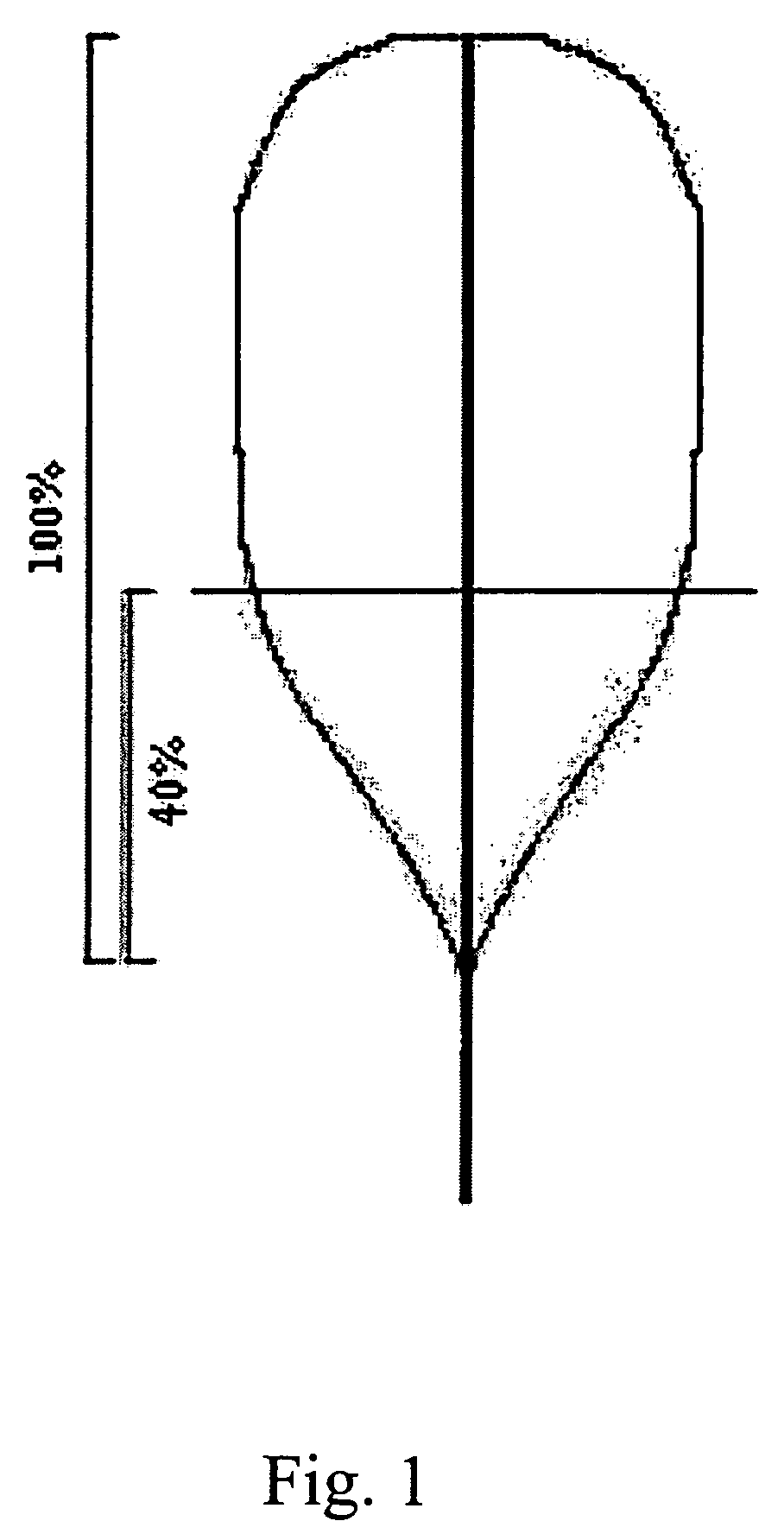Cos for mechanical harvest
a harvesting process and mechanical technology, applied in the field of new lettuce (lac), can solve the problems of labor-intensive harvesting process, relatively labour-unfriendly, and lack of uniform quality among mature plants
- Summary
- Abstract
- Description
- Claims
- Application Information
AI Technical Summary
Benefits of technology
Problems solved by technology
Method used
Image
Examples
example 1
[0043]Development and Characteristics of Lettuce Cultivar 41-69 RZ
[0044]The breeding history of Actarus started in Aramon, France in 1995 with a cross between a plant from the grasse lettuce cultivar ‘Bambi’ (Rijk Zwaan) as mother and a plant from the Bremia-resistant indoor batavia breeding line ‘95A.30955’ (Rijk Zwaan) as father with the aim to introduce resistance against Bremia lactucae (Bl-resistance) in the grasse type.
[0045]An F3-plant, ‘97A.23750’, derived from this cross was selected in July 1997 in Aramon, France and used as a father in a cross with a mother plant of the romaine cultivar ‘Fransesca’ (S&G) to introduce Bl-resistance in the romaine type. An F3-plant, ‘99A.23056’ derived from this cross was selected in April 1999 in Aramon, France for its leaves with a solid main vein, its short core, dark green colour, absence of fringe burn and its Bl-resistance and used as a father in a cross with a mother plant of the romaine cultivar ‘Chilim’ (S&G). ‘Chilim’ was chosen f...
PUM
 Login to view more
Login to view more Abstract
Description
Claims
Application Information
 Login to view more
Login to view more - R&D Engineer
- R&D Manager
- IP Professional
- Industry Leading Data Capabilities
- Powerful AI technology
- Patent DNA Extraction
Browse by: Latest US Patents, China's latest patents, Technical Efficacy Thesaurus, Application Domain, Technology Topic.
© 2024 PatSnap. All rights reserved.Legal|Privacy policy|Modern Slavery Act Transparency Statement|Sitemap

